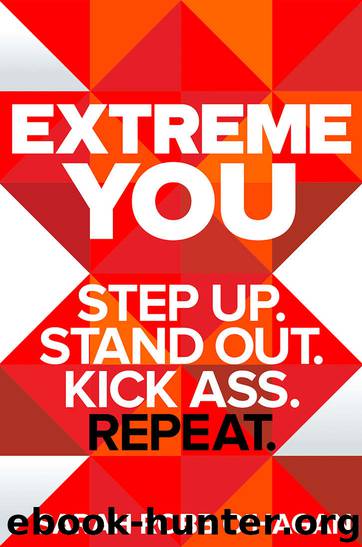Extreme You: Step Up. Stand Out. Kick Ass. Repeat. by Sarah Robb O'Hagan

Author:Sarah Robb O'Hagan [O'Hagan, Sarah Robb]
Language: eng
Format: epub
Publisher: HarperCollins
Published: 2017-04-03T22:00:00+00:00
Both Stubborn and Humble
The lifetime commitment to go in humble—and keep going in humble—requires an Extremer to maintain a balance between two opposite impulses. On the one hand, as Angela Duckworth has documented, it takes a heroic stubbornness to do whatever it takes to succeed. That I had in spades. On the other hand, even as you remain stubborn about succeeding, you need to be humble and flexible, always willing to learn new ways to achieve that success. And it’s not only Extreme individuals who have to manage that balance but wildly successful Extreme companies and brands, too. So often their ongoing success comes down to stubbornly returning to humility and listening—again and again.
A great example is Zumba dance fitness. It was created by Alberto “Beto” Pérez, a Colombian dancer and choreographer, who, back in the mid-1990s, forgot to bring the recorded music he usually played at the fitness classes he taught. Not wanting to cancel class, he grabbed some Latin and hip-hop tapes he had in his car and improvised a new class on the spot. That was the start of Zumba, the dance fitness program that now boasts fifteen million students in one hundred eighty countries around the world. (Did you hear that? Fifteen million means more than three times the entire population of New Zealand, all doing Zumba fitness classes every week. Zumba is a freakin’ game changer of a business!) The story, as you would expect, involves stubborn commitment and relentless hard work, but when I spoke with Beto and his cofounder, Alberto Perlman, so much of what they told me was about what they hadn’t known, the surprises and adaptations they’d made along the way, humbly.
For the first few years, they told me, they had thought of Zumba as a fitness program competing with lots of other fitness programs for that one hour a day when their customers worked out. Around 2007–8, they were expanding, and Alberto’s younger brother, Jeffrey Perlman, joined the company as head of marketing. Jeffrey asked them, “Why do your marketing pictures show the students’ whole body? Why don’t you do close-ups that show people smiling through the class?”
His question pointed out an important confusion in the way the partners understood their business. Officially, you could say, it was a fitness business, and they were promising what fitness businesses promise: weight loss, stronger muscles, six-pack abs, and so on. That was the world they knew. But what they heard from their most devoted instructors and students was something far more emotional: “Zumba changed my life.” People brought them a broad range of stories about surviving illness, getting through divorce, or in other ways putting their lives back together because of Zumba classes and the emotional support they offered.
As Alberto told me, “Beto knew this was how people viewed Zumba, because he had been watching the transformations of students and teachers in the program. But for us on the marketing side, it was frightening. This was a direction no one had gone in the fitness space before.
Download
This site does not store any files on its server. We only index and link to content provided by other sites. Please contact the content providers to delete copyright contents if any and email us, we'll remove relevant links or contents immediately.
| Business School Guides | GMAT |
| Guides | Interviewing |
| Job Hunting | Job Markets & Advice |
| Resumes | Vocational Guidance |
| Volunteer Work |
The Motivation Myth by Jeff Haden(4528)
Audition by Ryu Murakami(4099)
Adulting by Kelly Williams Brown(3671)
The Confidence Code by Katty Kay(3566)
Waiting in the Wings by Melissa Brayden(2805)
A Mind For Numbers: How to Excel at Math and Science (Even If You Flunked Algebra) by Barbara Oakley(2691)
Self-Esteem by Matthew McKay & Patrick Fanning(2604)
Nice Girls Don't Get the Corner Office by Lois P. Frankel(2594)
The ONE Thing by Gary Keller(2519)
The Dictionary of Body Language by Joe Navarro(2430)
Fooled by Randomness: The Hidden Role of Chance in Life and in the Markets by Nassim Nicholas Taleb(2413)
How to be More Interesting by Edward De Bono(2356)
Getting Things Done by David Allen(2319)
Designing Your Life by Bill Burnett(2267)
The Plant Paradox by Dr. Steven R. Gundry M.D(2040)
Police Exams Prep 2018-2019 by Kaplan Test Prep(2034)
What Color Is Your Parachute? 2015 by Richard N. Bolles(1929)
Dangerous Personalities by Joe Navarro(1894)
When to Jump by Mike Lewis(1808)
